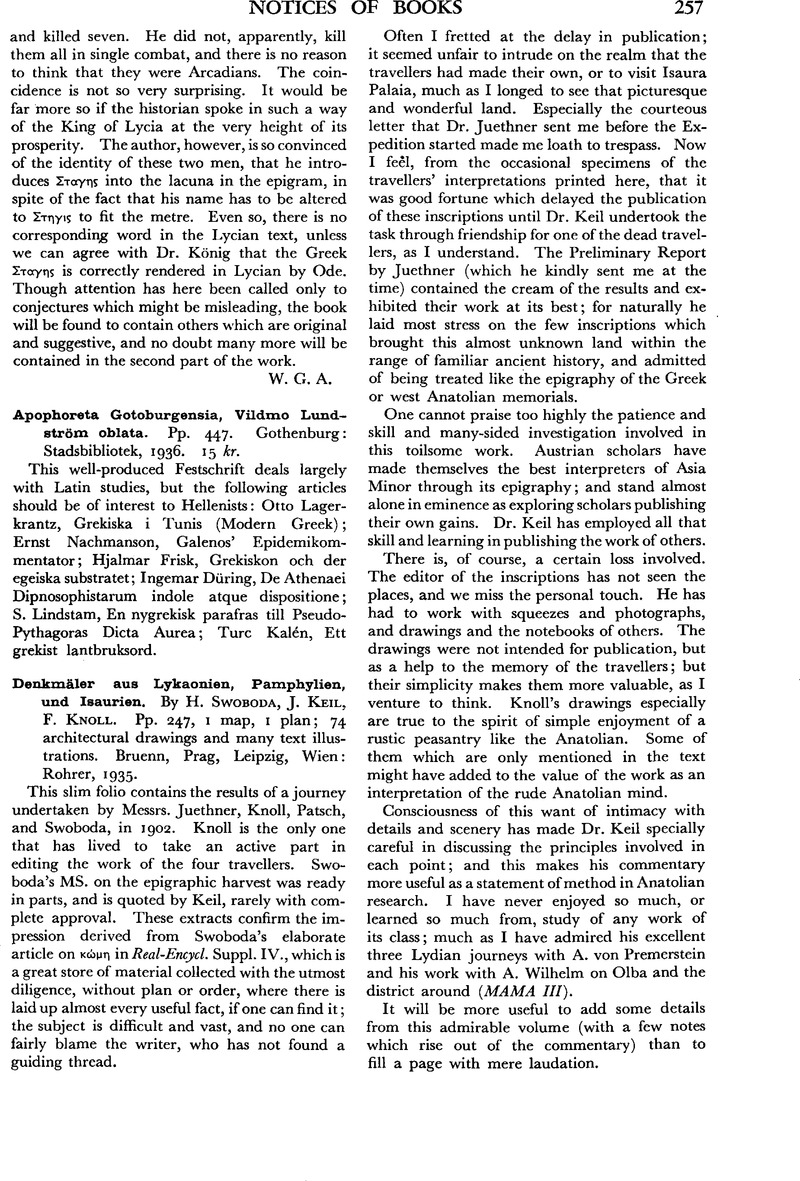No CrossRef data available.
Article contents
Denkmäler aus Lykaonien, Pamphylien, und Isaurien. By H. Swoboda, J. Keil, F. Knoll. Pp. 247, 1 map, 1 plan; 74 architectural drawings and many text illustrations. Bruenn, Prag, Leipzig, Wien: Rohrer, 1935.
Published online by Cambridge University Press: 18 September 2015
Abstract

- Type
- Notices of Books
- Information
- Copyright
- Copyright © The Society for the Promotion of Hellenic Studies 1936
References
page 258 note 1 Σινηθανδος in Hierocles is perhaps corrupt, but probably comes through transposition (from Σινθι); θ represents τρ.
page 258 note 2 Cases are confused as much as moods in that barbarous text.
page 259 note 1 Mestia in the Table is like the form used by Basil Μηαστια: Misthia is a false grecising name.
page 259 note 2 When colonia Antiochea became a metropolis, the name colonia disappeared. Colonia Parlais and Colonia Archelais kept the name colonia in Byzan-tine times, often without any second name.
page 260 note 1 Hamilton describes the walls and the arch of Hadrian as built of marble, but this is mere loose popular usage; and he describes the hills (from which the stone was quarried, Sterrett, p. 121) as of ‘blue and yellow semi-crystalline limestone.’




